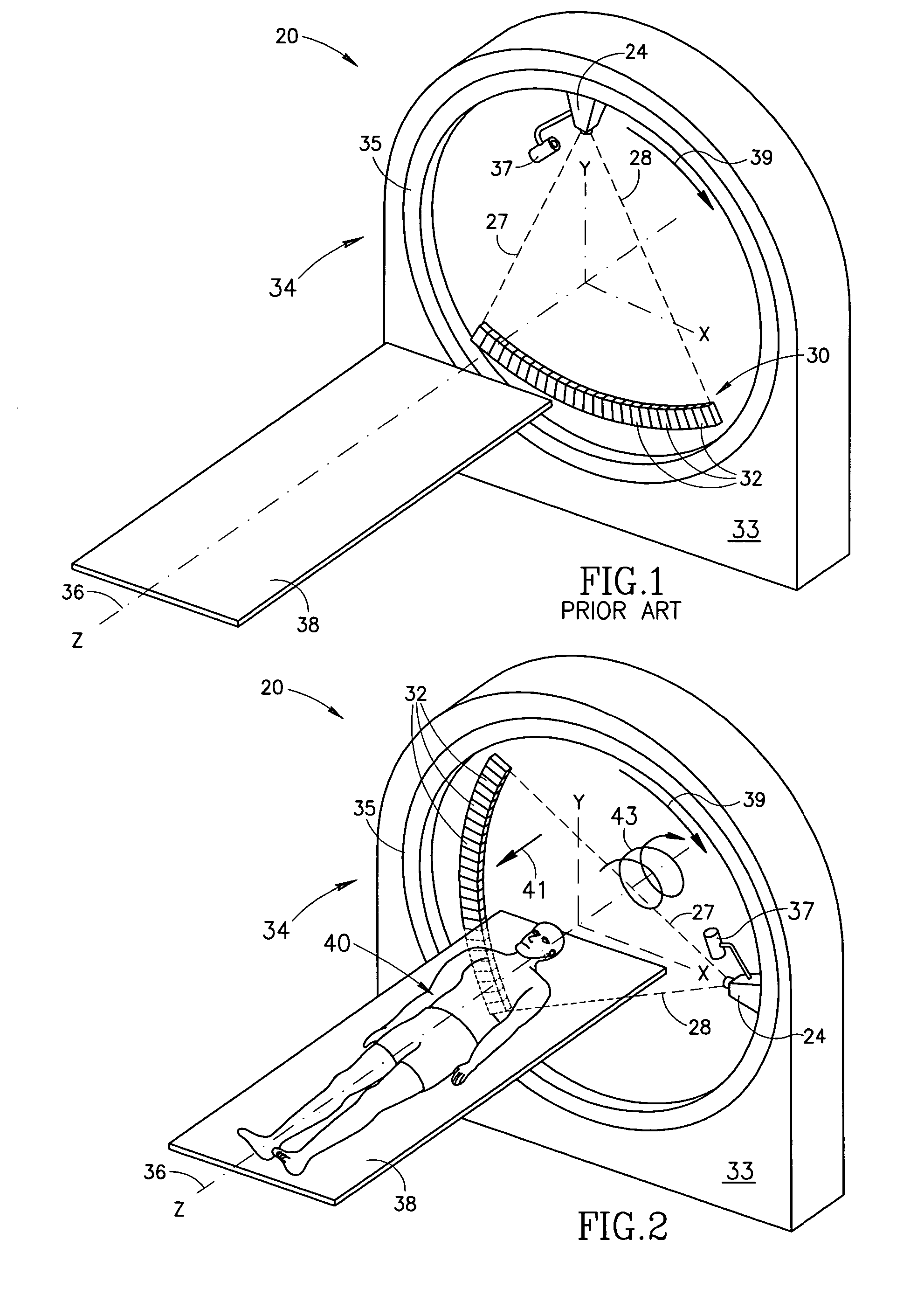Method and apparatus for calibrating X-ray detectors in a CT-imaging system
a technology of ct imaging and detectors, applied in tomography, applications, instruments, etc., can solve the problems of reducing patient throughput, increasing imager down time, and changing the gain ratio of detectors in ct imaging, and degrading the image provided by the ct imaging
- Summary
- Abstract
- Description
- Claims
- Application Information
AI Technical Summary
Benefits of technology
Problems solved by technology
Method used
Image
Examples
Embodiment Construction
[0073]FIG. 1 schematically shows a CT-imager 20 being air-calibrated to determine gain ratio factors, in accordance with prior art.
[0074]CT-imager 20 comprises an X-ray source 24 controllable to provide a fan-beam schematically indicated by dashed lines 27 and 28 and an array 30 of X-ray detectors 32 opposite the X-ray source for sensing X-rays in the fan-beam. CT-imager 20 comprises a gantry 34 having a stator 33 to which a rotor 35 is mounted so that the rotor can be controlled to rotate about an axis 36. X-ray source 24 and detector array 30 are rigidly mounted to rotor 35 so that when rotor 35 rotates about axis 36 the X-ray source and detector array also rotate about the axis. CT-imager 20 is shown, by way of example, as a single slice imager and array 30 has, accordingly, a single row of detectors in array 30. It is noted however that the present invention is not limited to single slice CT-imagers. Embodiments of the present invention may be practiced with multislice CT-scanne...
PUM
 Login to View More
Login to View More Abstract
Description
Claims
Application Information
 Login to View More
Login to View More - R&D
- Intellectual Property
- Life Sciences
- Materials
- Tech Scout
- Unparalleled Data Quality
- Higher Quality Content
- 60% Fewer Hallucinations
Browse by: Latest US Patents, China's latest patents, Technical Efficacy Thesaurus, Application Domain, Technology Topic, Popular Technical Reports.
© 2025 PatSnap. All rights reserved.Legal|Privacy policy|Modern Slavery Act Transparency Statement|Sitemap|About US| Contact US: help@patsnap.com



